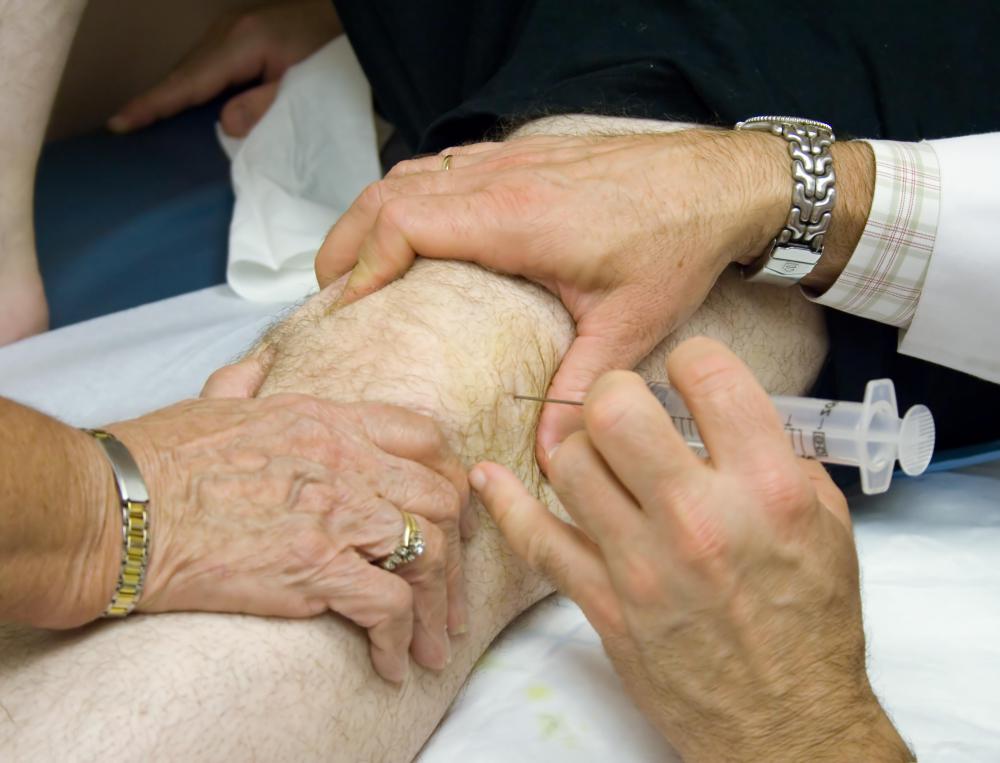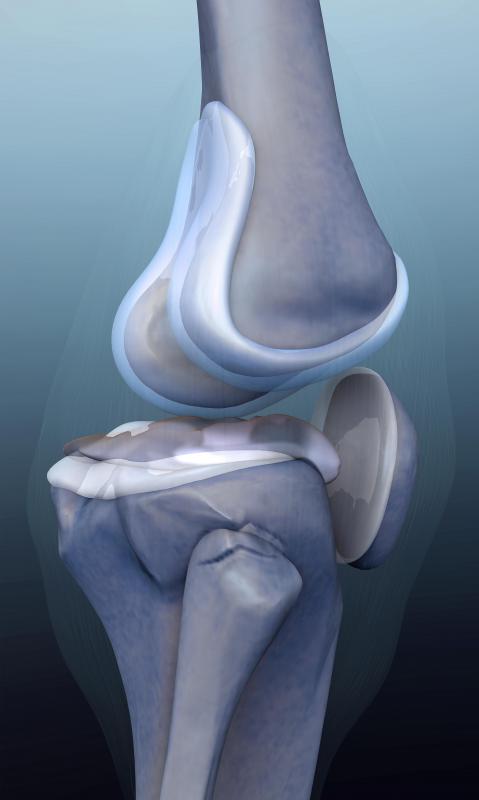At WiseGEEK, we're committed to delivering accurate, trustworthy information. Our expert-authored content is rigorously fact-checked and sourced from credible authorities. Discover how we uphold the highest standards in providing you with reliable knowledge.
What Is a Glucosamine Injection?
A glucosamine injection is a medical procedure in which a cartilage-building compound is delivered directly to deteriorating joints. It is most often prescribed for osteoarthritis, a degenerative condition in which joints — particularly knees and hips — become stiff and brittle. There is some dispute amongst medical professionals with respect to whether injecting glucosamine is more effective than orally taking the compound in capsule form. Most of the time, injections are something of a last resort in humans. They are more common in veterinary procedures, particularly those involving horses and dogs.
Glucoasmine is a compound of basic sugars and amino acids that can help the body preserve and regenerate cartilage. The joints of humans and most animals work through an interrelationship of bone, muscles, and ligaments, most of which are made of cartilage. Cartilage often serves to connect the muscle to the bone, and also acts as something of a shield to protect bones from rubbing against other bones during routine movements. Ligaments can wear down or deteriorate over time, which often leads to pain and a host of secondary injuries. A glucosamine injection delivers the helpful compound directly to a weakened joint, which is believed to ease pain and possibly even reverse damage.

Mammals do not produce glucosamine naturally. The compound occurs primarily in the shells of crustaceans such as crabs, lobster, and shrimp, but is easily synthesized by humans. Synthesis usually leads to cartilage strengthening, and in rare cases, even cartilage regeneration. In a glucosamine injection, a liquefied version of the compound is delivered directly into the problem joint via a long, hollow needle.

There is little research supporting glucosamine injection over oral glucosamine ingestion, which is usually delivered in pill form. Many doctors argue that the body is better able to absorb and process the compound when it digests and breaks down in the stomach. Direct delivery may seem like a more efficient way of delivering relief, but medical evidence is generally inconclusive on this point.

Most osteoarthritis and joint pain patients are initially prescribed an oral compound, if only because the risk of injury and adverse reaction is significantly lower. There are few side effects of glucosamine itself, but injection opens risks of infection, stiffness, and soreness that are not present with oral doses. Some of the only risks of glocosamine manifest in individuals with shellfish allergies, but these risks are present with tablets and injections alike. Injections are also more costly in most instances. Individuals who do not respond to oral doses may try glucosamine injection therapy, often at intervals determined by severity of degeneration and bodily response.

Injections are much more common in veterinary situations. Race horses are among the most common recipients, as these animals are prone to knee problems. Arthritic companion dogs are also frequent candidates. Horses and dogs are often unable to absorb oral glucosamine, but injections into the problem knees often provide relief.
AS FEATURED ON:
AS FEATURED ON:
















Discussion Comments
Some doctors and vets do recommend glucosamine injections when cartilage loss or damage is severe an it helps. We had a horse receive them a few years ago and there was a huge improvement in his mobility. He was not doing well at all and the glucosamine helped him heal and regain his joint and cartilage health.
@literally45-- I think that the tablets are enough for most people. They can be purchased at pharmacies and used regularly for long term. And they really works. I personally wouldn't want the injections when the tablets are already working.
I'm familiar with glucosamine oral supplements. I wasn't aware that there are also glucosamine injections but I can see how the injections may be more beneficial in some cases. Although the supplements work systematically throughout the body, the injections can direct the glucosamine to exactly where it needs to go. So if for example, someone has mobility due to a specific joint, a glucosamine injection into that joint may provide relief much more quickly than a supplement.
I'm not a doctor though. I'm simply contemplating based on what I know about injections. I've received cortisone injections in the past for arthritis in my knee. And I know that the injections worked much better and faster than oral cortisone. This is why I feel that glucosamine injections may be helpful.
Post your comments